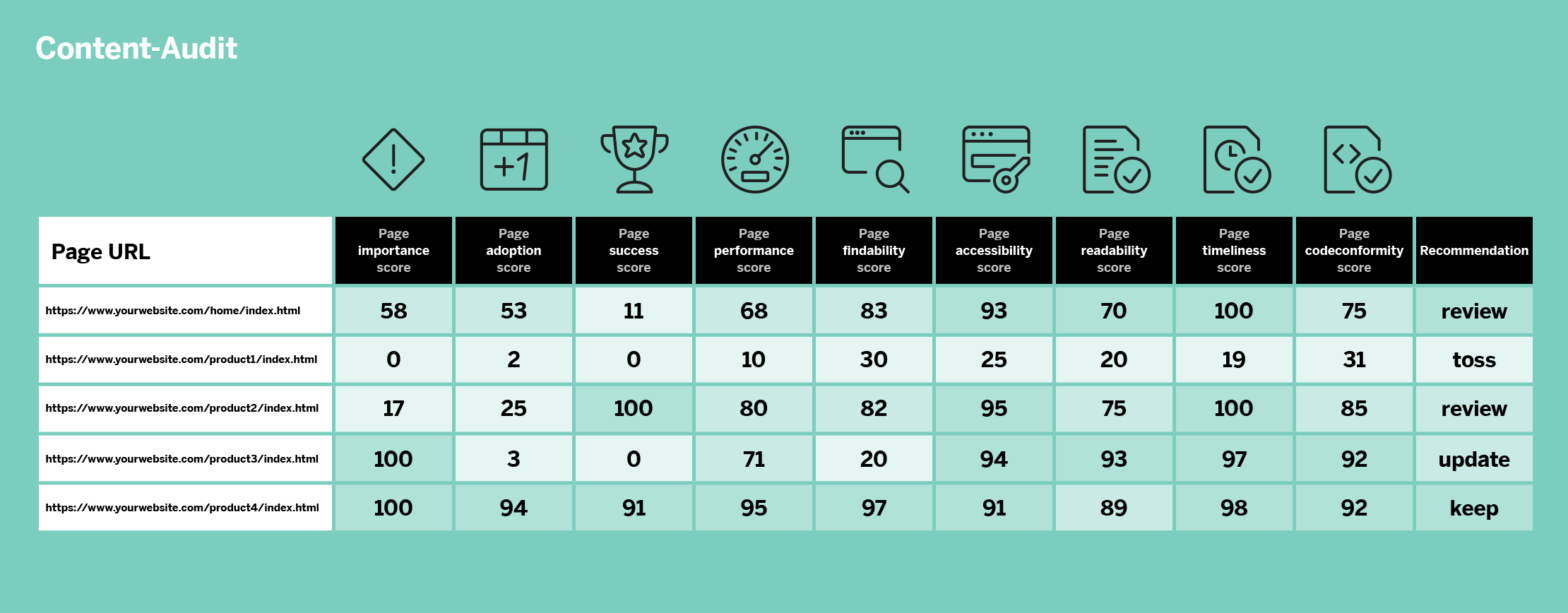Quality is a key to success
Digital touchpoints, particularly company websites, especially in the B2B environment, play a key role in achieving corporate goals – such as raising brand awareness or qualifying and generating sales leads. B2B buyers spend 27% of their purchasing time conducting independent online research¹ – most likely on the websites of potential suppliers. If the website does not meet the expected standards, this reflects poorly on the company and reduces the likelihood of supporting sales. So, what exactly are these standards?
When using websites, people often talk about the so-called user experience. Various evaluation models already exist for this purpose. One example is the User Experience Questionnaire, which uses surveys to measure the attractiveness, comprehensibility, efficiency, reliability, stimulation and novelty of a website. While these are certainly very important factors, they only describe a subset of the quality factors. After all, a website should also help to achieve results. Information about website visitors, their behaviour and achieving conversion goals is also very insightful. Whether a B2B buyer contacts the company is also influenced by a website’s findability and the information it contains.
Can't see the wood for the trees
Website managers have a wide range of free and paid tools at their disposal to measure various aspects of website quality. The best-known tools include Google Analytics and Web Vitals, also from Google, as well as specialised SEO/performance tools such as Screaming Frog and Sistrix. These tools can be used to collect and evaluate different performance indicators. However, the big challenge lies in selecting the right indicators to obtain an accurate overall picture. The selection depends on the objective of the quality assessment. Is it a regular quality check, perhaps in comparison with competitors' websites? Or is the aim to determine which content should be transferred as part of a relaunch? Or should the overall scope of the website be reduced to cut maintenance costs? Quality measurements can support a wide range of challenges. Setting up quality measurements in such a way as to create a valid basis for decision-making requires conceptional skill.
Design and implementation of a content audit ahead of a relaunch
In the run-up to a relaunch, it is particularly important to assess the quality of the website in order to identify any unnecessary elements and address any weaknesses that have emerged during its operation. Of course, this process often reveals sensitivities regarding which content must be transferred to the new website during a relaunch. This is why it is so important to create a basis for decision-making that is based on objective metrics.
To provide our customers with a reliable basis for such a content audit, we have developed a special matrix. This combines relevant indicators from various instruments to provide a full overview of the current quality and performance status on a scale from 0 to 100.

Together with you, we identify the relevant websites and the scores that are meaningful to you, such as:
-
Page importance score
Describes how important the page is in terms of its contribution to the achieving corporate goals. -
Page adoption score
Describes how intensively the respective pages are used by visitors. -
Page success score
Describes the page’s contribution to the company’s goals. -
Page performance score
Describes the technical speed of the respective page. -
Page findability score
Describes how easy the respective page can be found. -
Page accessibility score
Describes how accessible the page is. -
Page readability score
Describes the readability of the page’s content. -
Page timeliness score
Describes the topicality of the respective page.
These different scores can be used to identify patterns that provide information about which pages should definitely, conditionally or not at all be considered during the relaunch process. This baseline measurement can also be used to systematically assess the quality of the website on an ongoing basis, in line with quality management standards established in the industry, thus ensuring that the company’s digital information offering contributes to its corporate goals.
Are you also facing a website relaunch project, or would you like to regularly audit your website’s quality?
We look forward to hearing from you. You can contact us by telephone on +49 611 . 238 50 10, or via email to kontakt(at)diefirma.de.
Cover image
Lewis Fagg auf Unsplash.com
Sources:
¹ Gartner – Die B2B Buying Journey
